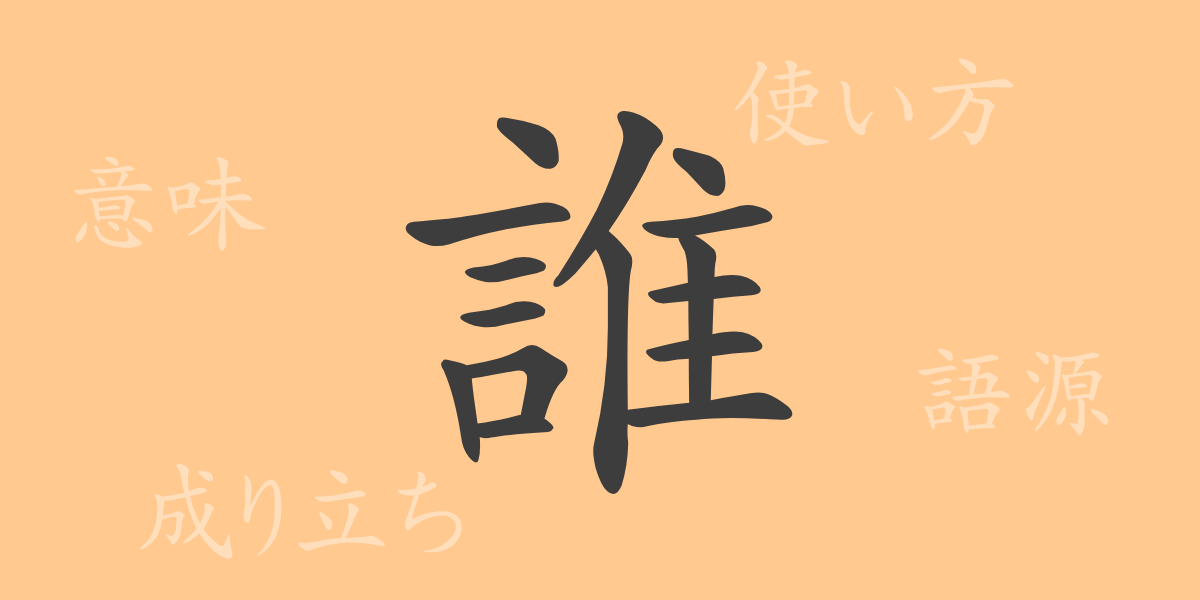Words evolve over time, and kanji, in particular, have a deep history and background. One of the common kanji in Japanese is ‘誰’ (だれ) (dare), which is frequently used in everyday conversation and literature, yet its origins and applications are often less known. This article shines a spotlight on the character ‘誰’, exploring its development, meaning, usage, and related phrases and idioms.
Origins of ‘誰’ (だれ) (dare)
The kanji ‘誰’ has its roots in ancient China, initially used solely as an interrogative term, and its form has changed over time. As time passed, both its shape and meaning evolved, and it has established itself as a crucial interrogative word in modern Japanese.
Meaning and Usage of ‘誰’ (だれ) (dare)
‘誰’ is primarily used as an interrogative pronoun. It does not specify a particular person but is used to inquire about an unspecified individual. It is commonly used in sentences like ‘誰が来ましたか?’ (だれがきましたか?) (Who came?) and ‘誰もが知っている話’ (だれもがしっているはなし) (A story everyone knows), and is pronounced ‘だれ’ (dare) in conversational speech.
Readings, Stroke Count, and Radical of ‘誰’ (だれ) (dare)
Understanding the readings, stroke count, and radical of ‘誰’ is fundamental for learning kanji.
- Readings: On’yomi ‘スイ’ (Sui), Kun’yomi ‘だれ’ (dare)
- Stroke Count: 15 strokes
- Radical: 言部 (ごんべん) (gonben)
Phrases, Idioms, and Proverbs Using ‘誰’ (だれ) (dare) and Their Meanings
There are many idioms and proverbs that include the kanji ‘誰’. For example, ‘誰彼かまわず’ (だれかれかまわず) (regardless of who it is), ‘誰それ’ (だれそれ) (somebody unspecified), and ‘誰も彼も’ (だれもかれも) (everybody without exception) are expressions that reflect the versatility of ‘誰’ in Japanese language.
Summary on ‘誰’ (だれ) (dare)
The kanji ‘誰’ occupies a special place in Japanese through its history, meaning, usage, and cultural background. Its role as an interrogative pronoun is essential, but it also plays a significant role in various expressions. Through this article, it is hoped that readers will deepen their understanding of ‘誰’ and enjoy richer Japanese expressions.

























